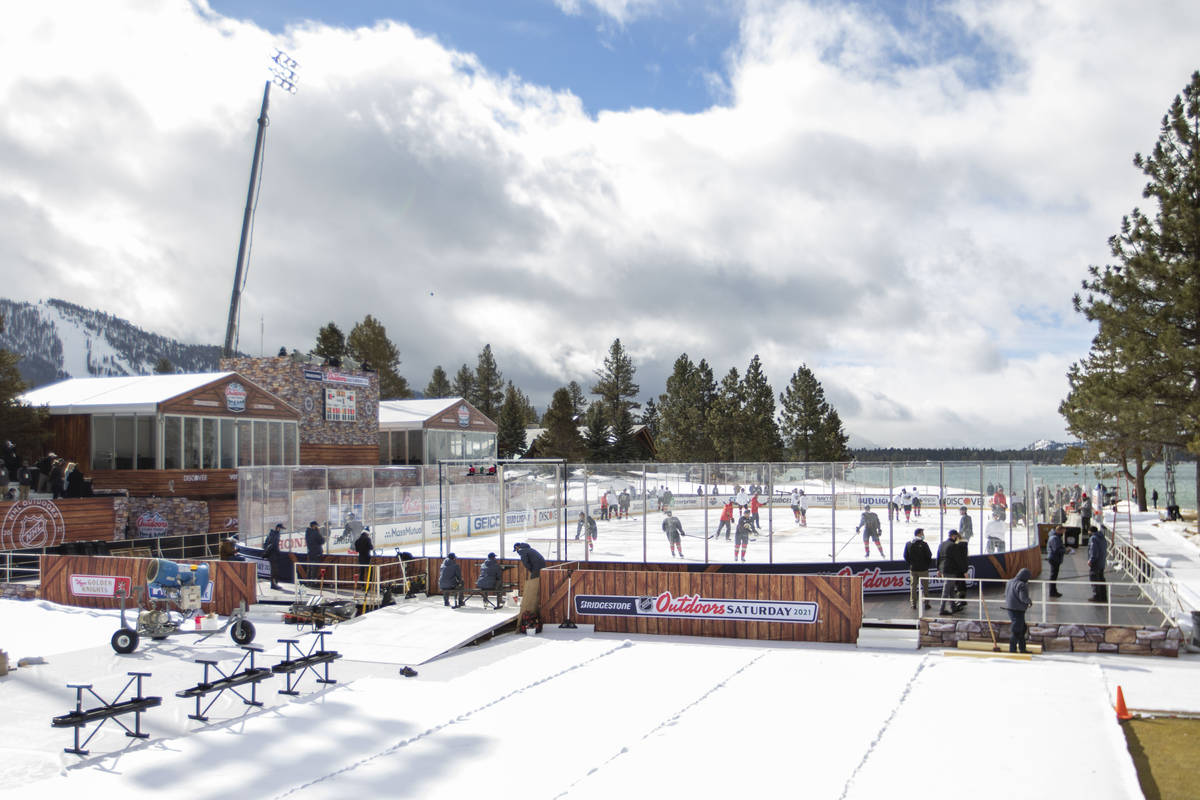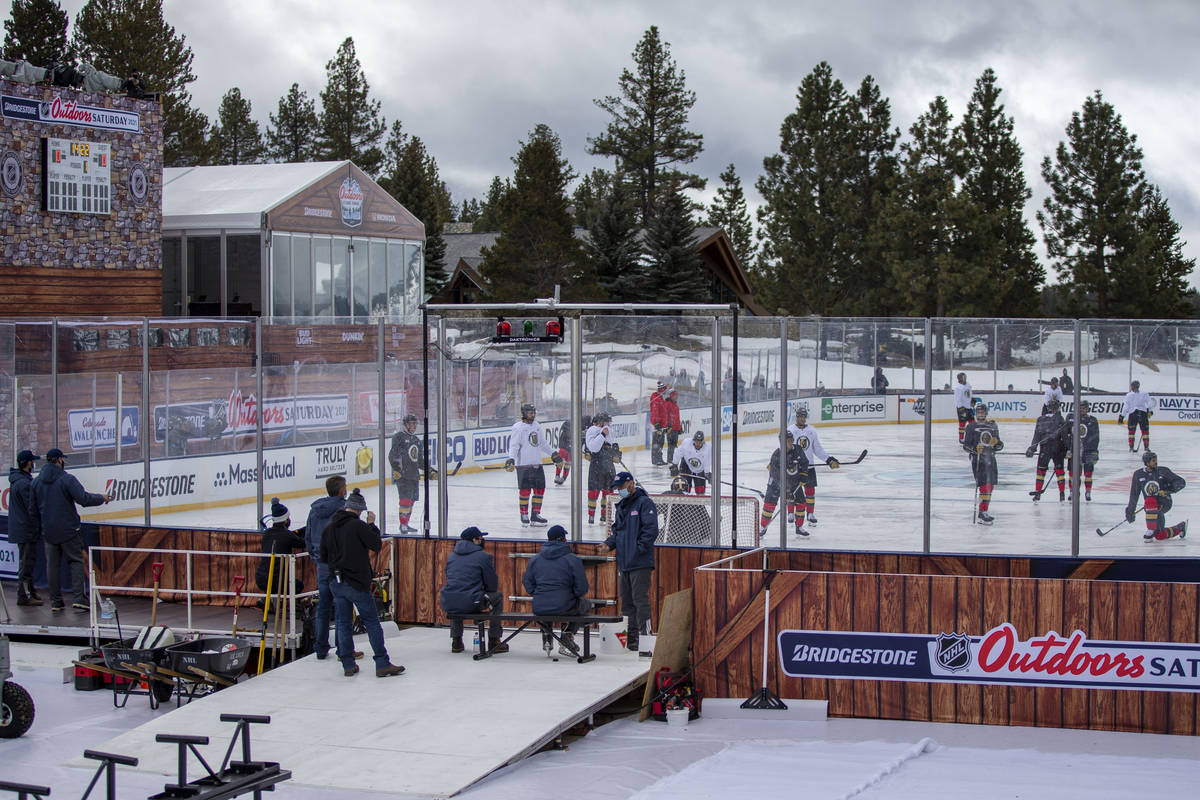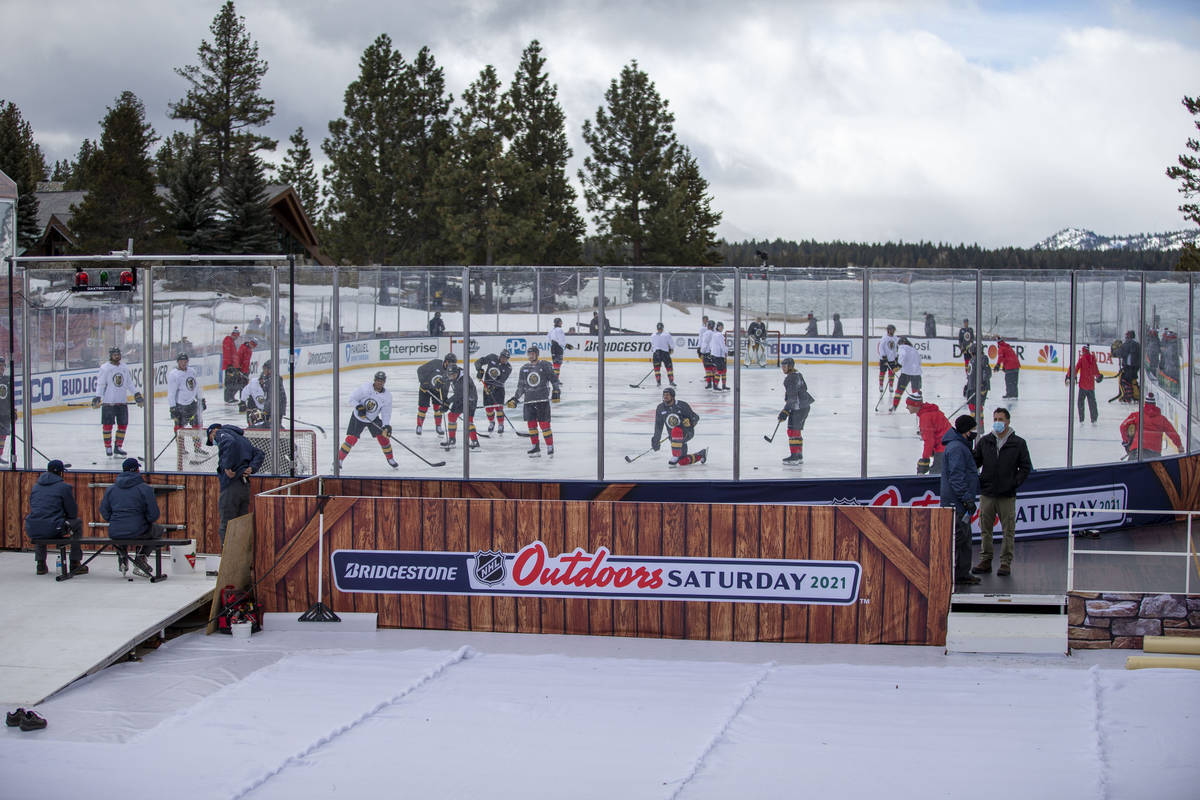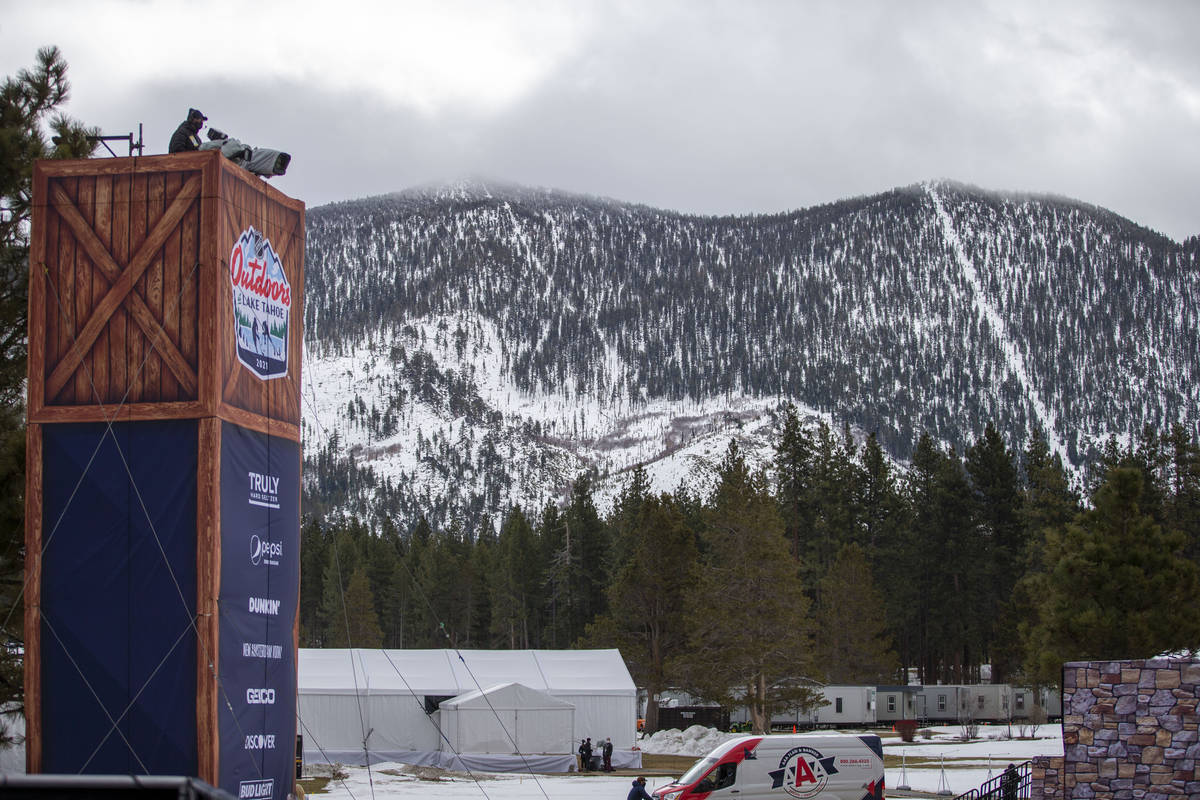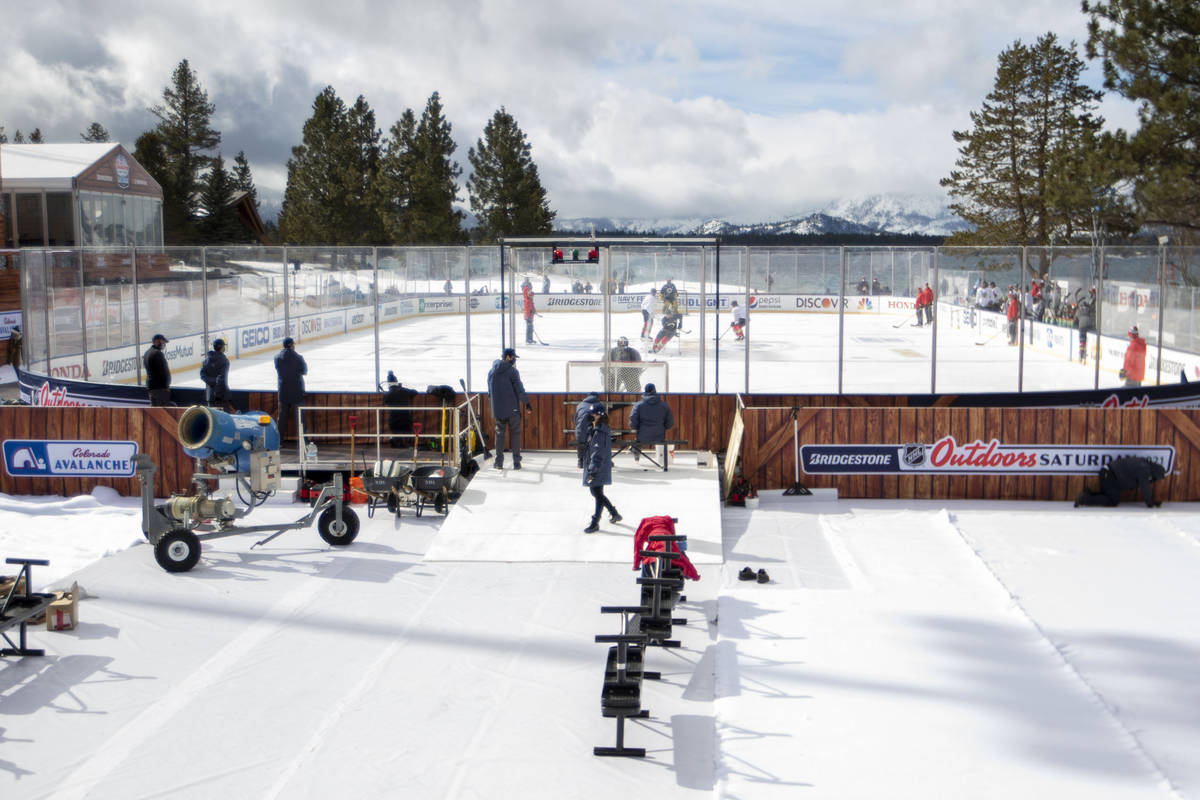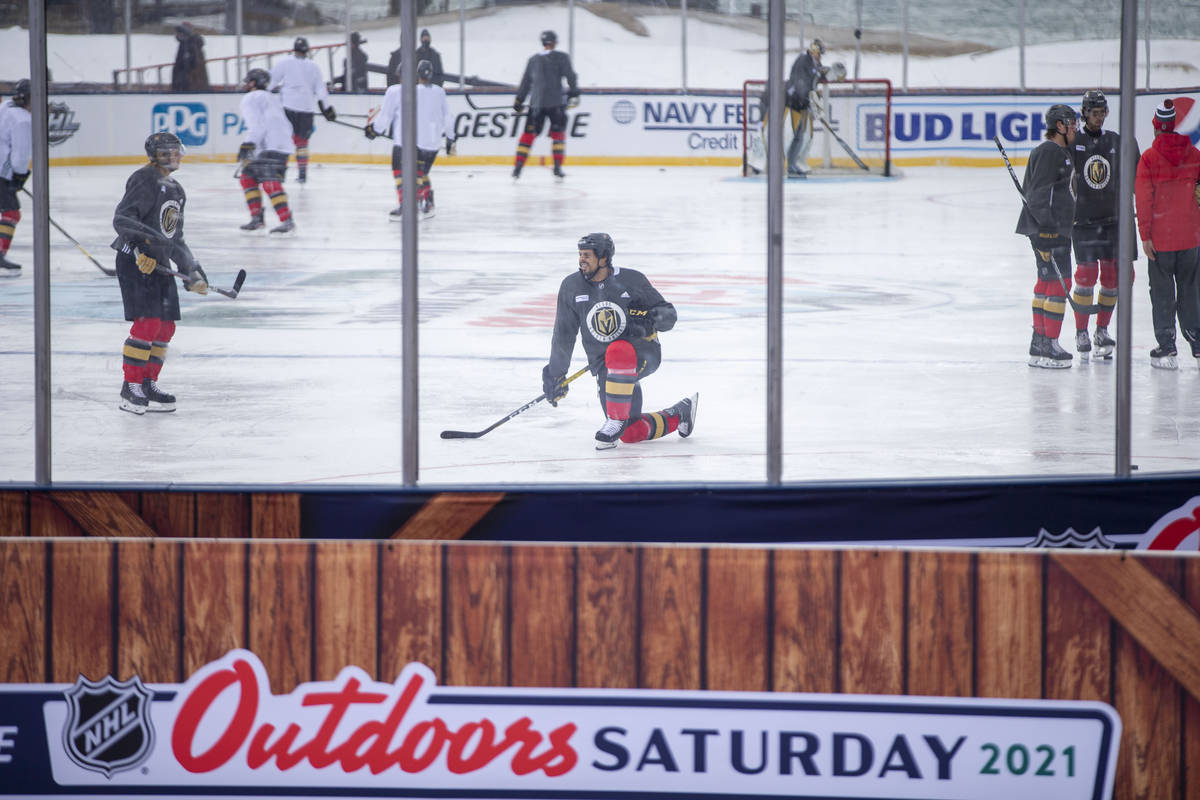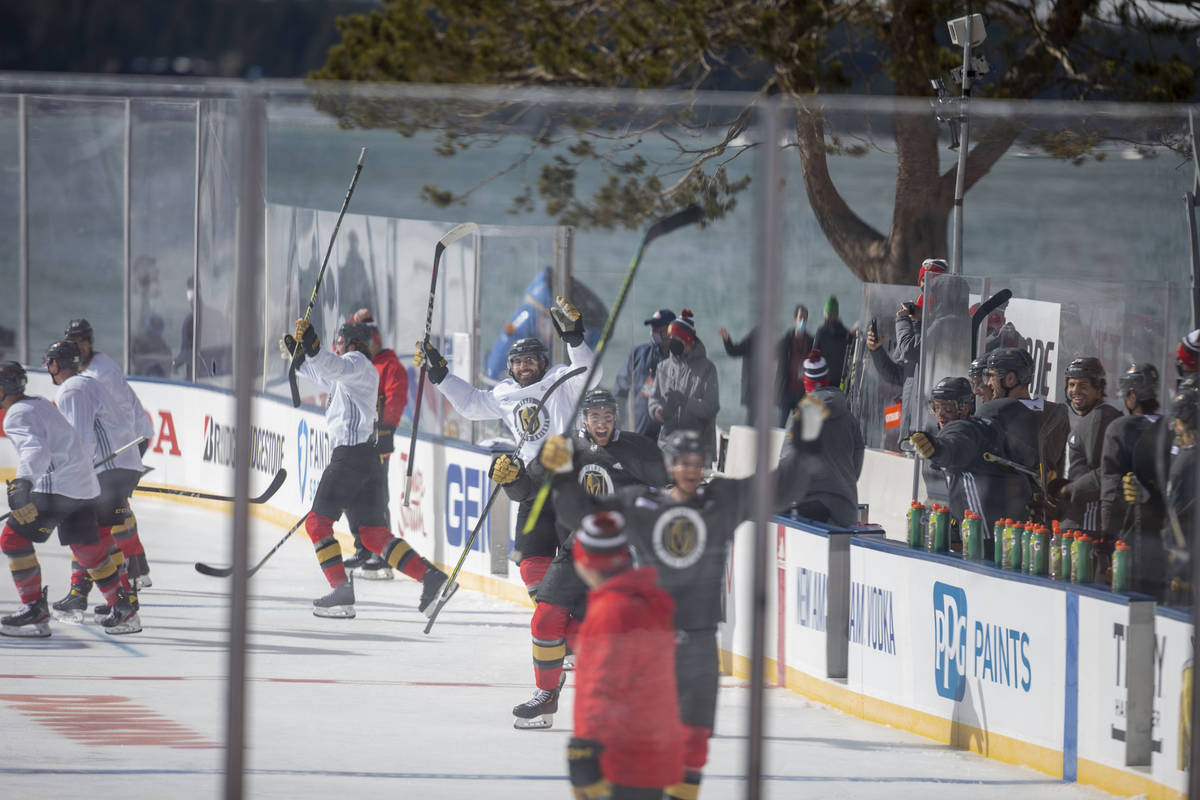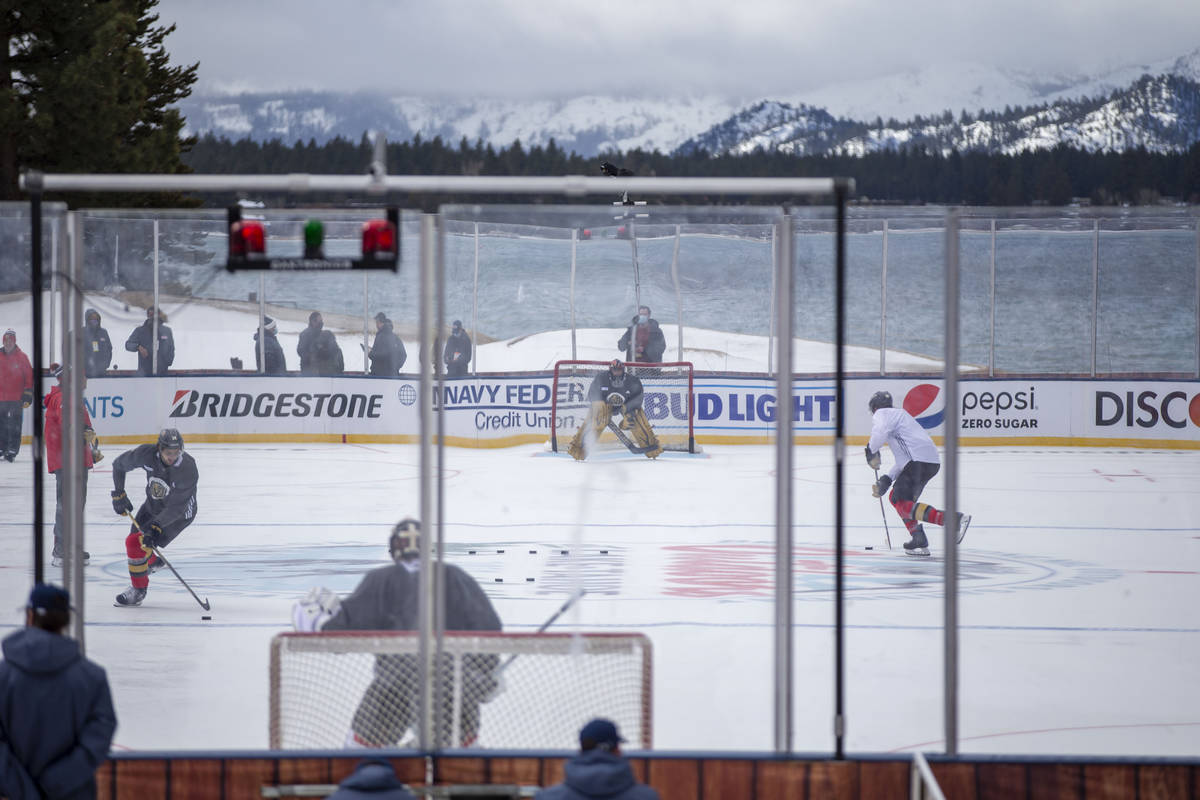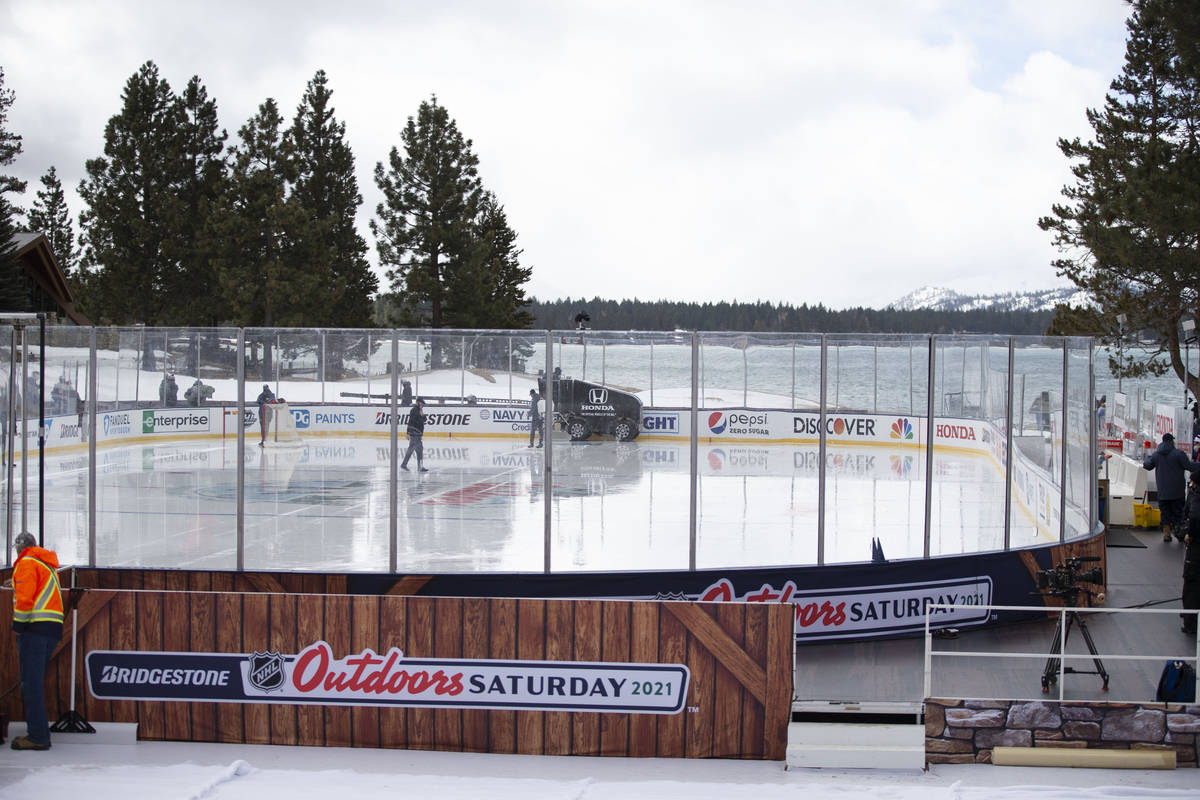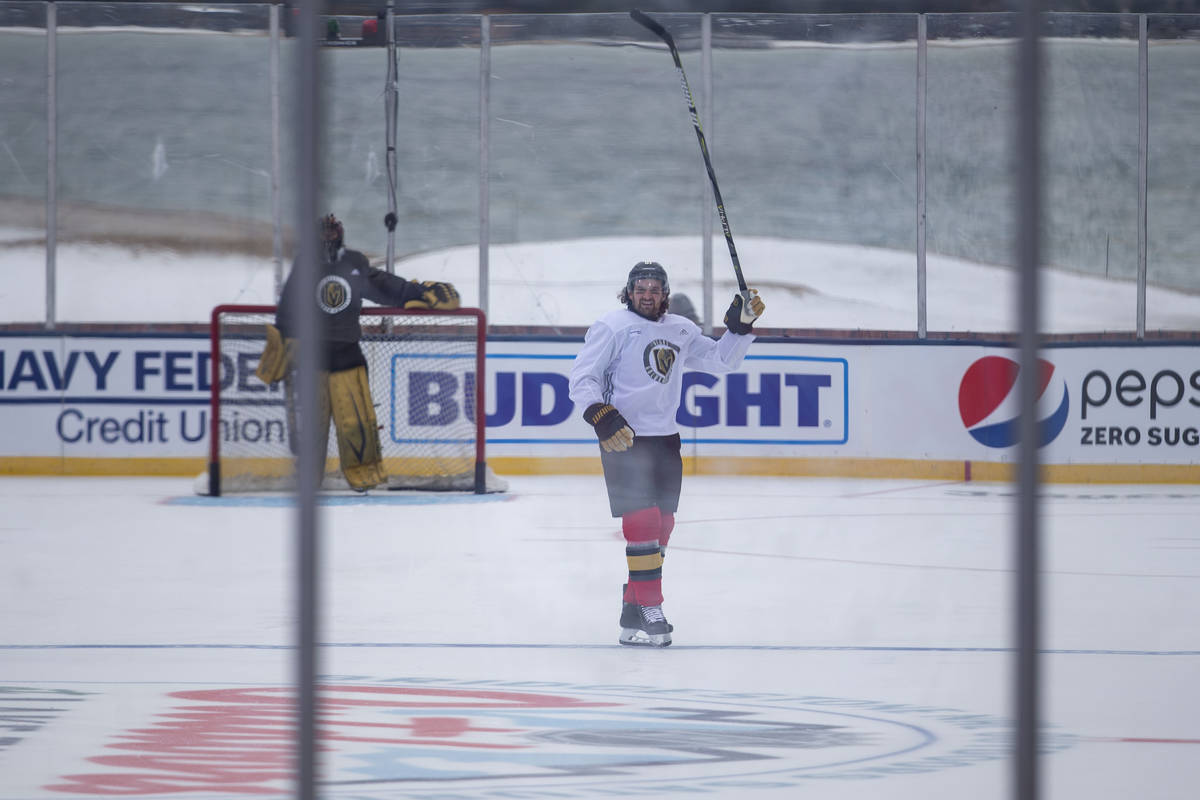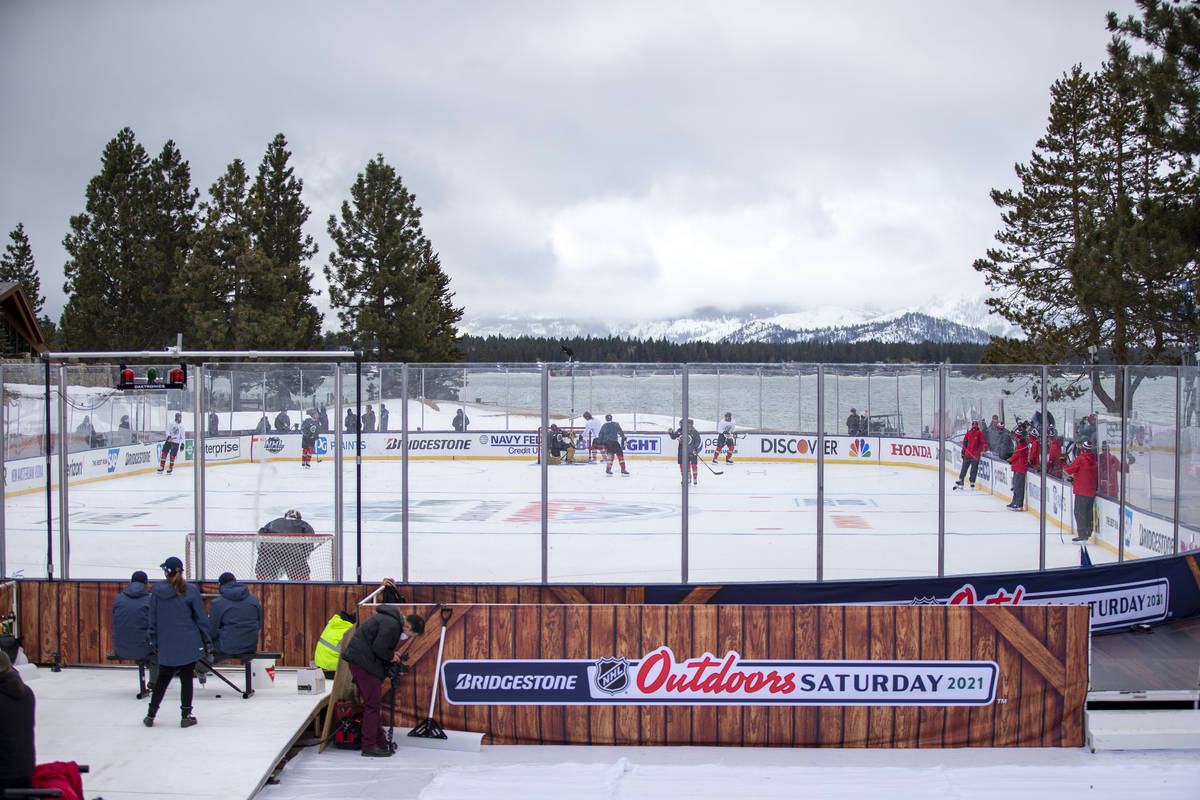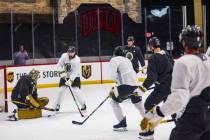How the Golden Knights’ Lake Tahoe game came together
NHL chief content officer Steve Mayer and seven other league officials made the trek to Lake Tahoe in December in search of a venue that could be the site of a marquee regular-season event.
The postponement of the annual Winter Classic and All-Star Game in October meant the NHL needed something new for fans to look forward to. The league found exactly what it was looking for at the Edgewood Tahoe Resort Golf Course.
The venue, with its south-shore location and mountain views, “had us at hello,” Mayer said. The NHL decided to stage two outdoor games there on national TV in the hopes of catching the entire sporting public’s attention.
That lofty goal required a production process unlike any other the league had attempted. But the end result will be on display when the Golden Knights meet the Colorado Avalanche at noon Saturday on KSNV-3. On Sunday, the event concludes with the Philadelphia Flyers-Boston Bruins game.
“It is turning out to be one of those (events) that you look at, and you think years and years from now, people are still going to be talking about it,” Mayer said. “We do feel that we’re putting together something that will be very memorable.”
Preparation
Lake Tahoe wasn’t the only location the NHL scouted for potential outdoor games — Mayer declined to name the others — but it checked so many of the league’s boxes.
The scenery was gorgeous. The area had shown it could handle major events, such as golf’s American Century Championship. Everything just felt right.
“We were a natural fit,” said Corinna Osborne, the general manager of Edgewood Tahoe. “It was a perfect partnership from the beginning when we started looking at the site and the location.”
That didn’t mean everything came easy. The NHL typically plans its outdoor games a year in advance. Its officials take 15 to 20 site visits during the buildup. But that wasn’t possible this year because of the COVID-19 pandemic.
The league had two months to plan the Lake Tahoe games. It visited just once in the planning process. So many things had to be coordinated remotely and quickly. But Mayer said his team took a look around the surroundings and said: “We’re going to make this work.”
“We thank the Lord for Google Earth and other great pictures of this venue that we were able to work with and develop the plan,” Mayer said. “It’s a unique year, unique times.”
Arrival
The NHL faced one of its greatest challenges when it arrived to build the rink in the week of Feb. 8.
All of the previous regular-season outdoor games took place in an existing stadium with the infrastructure in place to handle a sporting event. It just needed a rink. At Lake Tahoe, everything had to be built from scratch.
That goes beyond ice, boards and glass. Wiring needed to be installed so electricity could flow to the 18th fairway of the golf course where the rink was being built. A place for team officials and media to watch the game had to be constructed.
“There’s really nothing here,” said Derek King, the NHL’s senior manager of facilities and hockey operations. “It’s been a complete build.”
The NHL ended up building a chalet rinkside to host its off-ice officials, replay review technology and general manager booths. It also put up tents to serve as team spaces. They not only have locker rooms but also treatment rooms and exercise equipment so players can get ready for the game. One of the only things missing from the tents are showers.
The teams are staying nearby, so the league thought it would be safer for players to shower in their hotel rooms.
“We’re doing everything we can to replicate everything an NHL team needs and has in their own locker room,” said Dean Matsuzaki, the NHL’s executive vice president of events.
Adding ice
The process of getting the rink built started with the NHL parking its mobile refrigeration unit on the 18th fairway and getting its generators up and running. The massive 53-foot trailer has ice-making and ice-monitoring equipment to ensure any sheet being constructed is up to league standards.
King and his crew started laying down pipes Feb. 9 that carry coolant from the refrigeration unit to the field. The crew then dropped in decking to hold the aluminum pans the ice would go on top of. The boards went up after that, and the workers were ready to start installing the ice Feb. 12.
Constructing the sheet was basically an around-the-clock job. It required working in two shifts so the crew could constantly monitor the ice to get it to the 2 inches of thickness they wanted. An NHL sheet is typically 1-1.25 inches thick, but the league likes to have it thicker for outdoor games in case weather becomes a factor.
Water was added slowly via a hose throughout the day, and the coolant running to the aluminum pans kept the ice close to its ideal surface temperature of 22 degrees Fahrenheit. It takes about 10,000 gallons of water to get 1 inch of thickness.
As things progressed, the lines and logos were added Tuesday night using a textile material that was frozen in during the build. The rink was ready to go Friday when the teams practiced on it.
“This is a drop-the-mic type outdoor rink where it’s as nice as I’ve ever seen,” said Knights coach Pete DeBoer, who also participated in an outdoor game at Yankee Stadium. “It’s awe-inspiring when you walk out there and see the mountains and the lake in the background.”
Blazing a trail?
The NHL hopes the unique path it took to make the Lake Tahoe games a reality makes them an equally special event.
Mayer said he had been inspired for years by the 1999 movie “Mystery, Alaska” — where a small-town team takes on the New York Rangers outdoors with mountains in the background — but it was never the right time to pull it off. The challenges of COVID-19, such as not having fans in attendance, opened the doors for the league to try something different.
If all goes well, it could pave the way for similar events becoming a part of the NHL’s calendar like the Winter Classic and Stadium Series games.
“We always love to have our fans in attendance,” Matsuzaki said. “That’s our main goal, but if this is really successful, you may see it down the road.”
Contact Ben Gotz at bgotz@reviewjournal.com. Follow @BenSGotz on Twitter.



